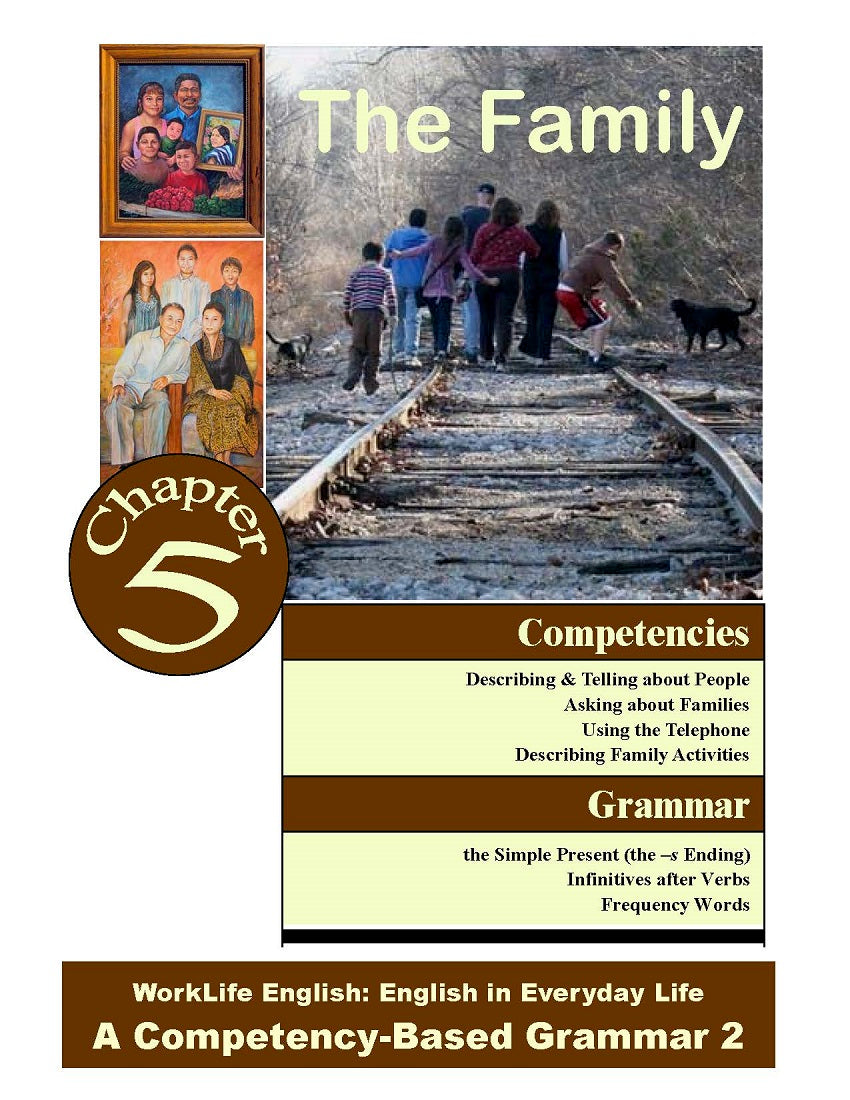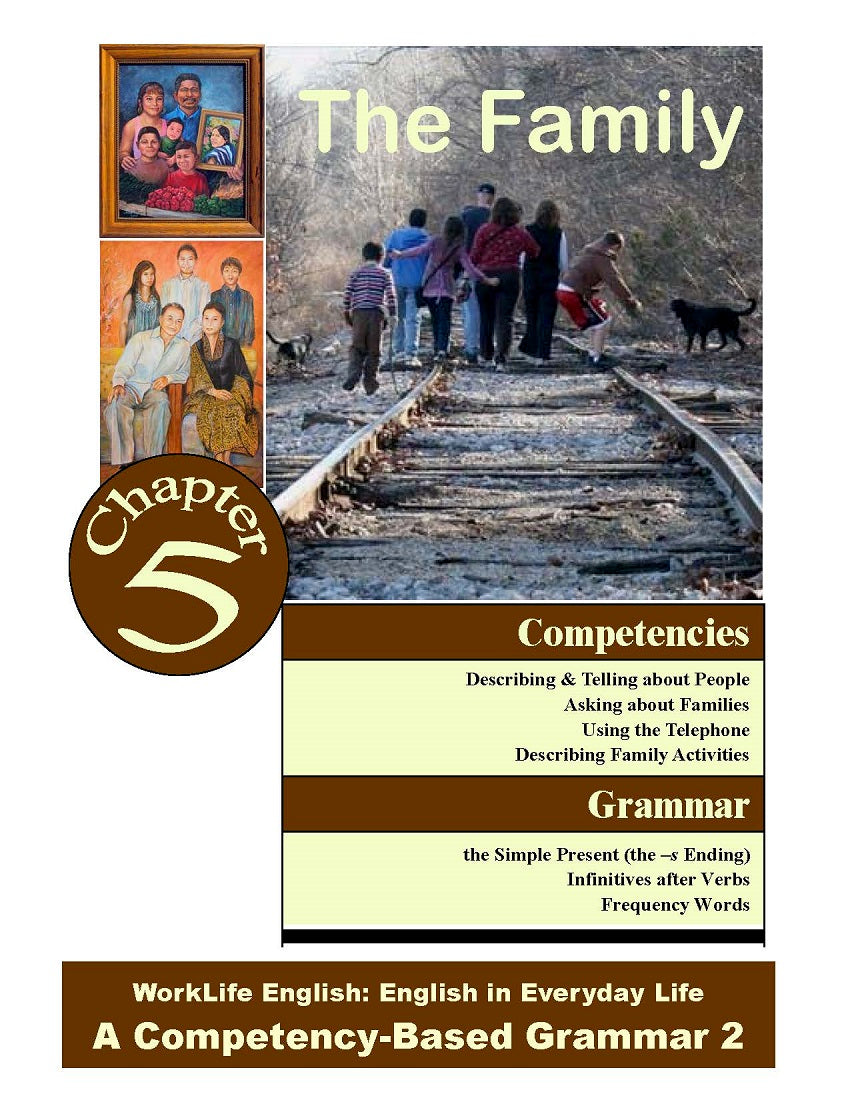1
/
of
1
Work/Life English
D-03.03 Get & Use Simple-Present Statements, YES/NO & WH-Questions & Answers
D-03.03 Get & Use Simple-Present Statements, YES/NO & WH-Questions & Answers
Regular price
$3.00 USD
Regular price
Sale price
$3.00 USD
Unit price
/
per
Parts One to Three of Chapter 5 (the Simple Present –s Ending: “The Family”) of WorkLife English Grammar 2: English in Everyday Life.
13 pages
Who It’s For: (Teachers & Helpers of) Beginning to Intermediate Language Learners
Why It’s Useful: Because it’s unique to English, language learners may not expect to have to add –(e)s to each Third-Person Singular Simple-Present Verb. Even so, the ending is needed in statements with subjects that are singular nouns or personal pronouns (he, she, it). Paralleling a previous chapter with only 1st, 2nd, and/or plural sentence subjects, these pages cover Affirmative & Negative Statements + Yes/No & Wh-Questions & Answers in the 3rd Person Singular. They also include Infinitives after Verbs and Frequency Words, both common in the Simple-Present.
What You’ll Do:
[1] With others, act out the Strip Story “Do You Miss Your Family?” on page 68. (Have learners) Identify the many third-person singular sentence subjects + tell the matching main (after auxiliary) verbs. If ready for an “oral pretest,” some participants can pre-demonstrate their ability in the forms by telling briefly about one of their own relatives or friends. Then perhaps they can direct small learning-groups in going over the boxed Sentence Patterns, Instructions, and Exercises A-E (+ *F + **G) on pages 69-72. One or more members from each group can report to the whole class, telling what they now know about someone else’s relation, companion, or pal.
[2] For Part Two on pages 73-76, adapt Step [1] above to the material. Be sure to (get others to) notice the differences between Statement and Question (+ Short Answer) forms. End the segment with paired activities and more learning about one another.
[3] Regard Part Three on pages 77-79 as a Reading Selection with Comprehension Questions. Then use the material for grammar analysis and practice. End the Part and the Chapter with more oral and/or written interaction (exchange of information) Participants and their connections to relatives and friends.
Couldn't load pickup availability


